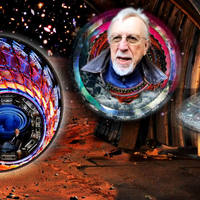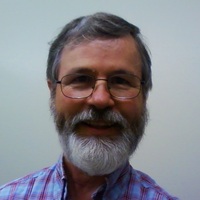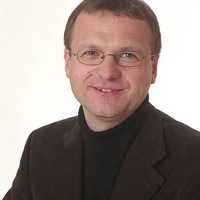Papers by Benoit Deveaud-Plédran
Abstract Phase transitions to quantum condensed phases—such as Bose–Einstein condensation (BEC), ... more Abstract Phase transitions to quantum condensed phases—such as Bose–Einstein condensation (BEC), superfluidity, and superconductivity—have long fascinated scientists, as they bring pure quantum effects to a macroscopic scale. BEC has, for example, famously been demonstrated in dilute atom gas of rubidium atoms at temperatures below 200 nanokelvin. Much effort has been devoted to finding a solid-state system in which BEC can take place.
Coherent manipulation of spin ensembles is a key issue in the development of spintronics. In part... more Coherent manipulation of spin ensembles is a key issue in the development of spintronics. In particular, multivalued spin switching may lead to new schemes of logic gating and memories. This phenomenon has been studied with atom vapours 30 years ago, but is still awaited in the solid state. Here, we demonstrate spin multistability with microcavity polaritons in a trap.
Abstract One of the most striking quantum effects in an interacting Bose gas at low temperature i... more Abstract One of the most striking quantum effects in an interacting Bose gas at low temperature is superfluidity. First observed in liquid 4 He, this phenomenon has been intensively studied in a variety of systems for its remarkable features such as the persistence of superflows and the proliferation of quantized vortices 1. The achievement of Bose–Einstein condensation in dilute atomic gases 2 provided the opportunity to observe and study superfluidity in an extremely clean and well-controlled environment.
A microscopic theory is presented for the giant amplification from microcavities in the strong ex... more A microscopic theory is presented for the giant amplification from microcavities in the strong excitonphoton coupling regime, providing excellent agreement with recent angle-resolved pump-probe experiments. The analytical and numerical solutions give insight into the physics of the polariton parametric amplifier. The coherent gain, due to polariton four-wave-mixing, has a threshold dependence on the pump power and is spectrally blueshifted from the lower polariton energy.
Using an angle-resolved heterodyne four-wave-mixing technique, we probe the low momentum excitati... more Using an angle-resolved heterodyne four-wave-mixing technique, we probe the low momentum excitation spectrum of a coherent polariton gas. The experimental results are well captured by the Bogoliubov transformation which describes the transition from single particle excitations of a normal fluid to soundlike excitations of a superfluid.
We report on the observation of spontaneous coherent oscillations in a microcavity polariton boso... more We report on the observation of spontaneous coherent oscillations in a microcavity polariton bosonic Josephson junction. Condensation of exciton polaritons here takes place under incoherent excitation in a double potential well naturally formed in the disorder. Coherent oscillations set on at an excitation power well above the condensation threshold. The time resolved population and phase dynamics reveal the analogy with the ac Josephson effect.
Abstract Singly quantized vortices have already been observed in many systems, including the supe... more Abstract Singly quantized vortices have already been observed in many systems, including the superfluid helium, Bose-Einstein condensates of dilute atomic gases, and condensates of exciton-polaritons in the solid state. Two-dimensional superfluids carrying spin are expected to demonstrate a different type of elementary excitations referred to as half-quantum vortices, characterized by a π rotation of the phase and a π rotation of the polarization vector when circumventing the vortex core.
We have studied the luminescence of narrow quantum wires at photoexcitation densities of up to 3 ... more We have studied the luminescence of narrow quantum wires at photoexcitation densities of up to 3 3 106 cm21. We show that even at these densities, which are well above the expected Mott density of 8 3 105 cm21, excitonic recombination dominates over other recombination channels in stark contrast with the behavior of quantum wells and bulk structures at equivalent densities.
Abstract The capture of photoexcited carriers in different laser structures is investigated by su... more Abstract The capture of photoexcited carriers in different laser structures is investigated by subpicosecond luminescence spectroscopy. The capture time at 20 and 80 K is monitored by the decay of the luminescence of the confinement layers. It is found to range between 2 and 3 ps for both linear and parabolic grading, and to be much longer in nongraded structures.
Abstract Microcavity exciton polaritons, the fundamental optical excitations of semiconductor mic... more Abstract Microcavity exciton polaritons, the fundamental optical excitations of semiconductor microcavities with quantum wells inside, have been proposed as promising candidates for observing stimulated scattering, condensation and other phenomena related to the bosonic nature of excitons. Having a light mass, quantum degeneracy of polaritons can be reached at low densities and high temperatures.
Ultrafast pump-probe measurements evidence the dynamical Stark splitting in the exciton absorptio... more Ultrafast pump-probe measurements evidence the dynamical Stark splitting in the exciton absorption spectrum of a single semiconductor quantum well. The intensity of the Stark sidebands in the spectrum is comparable to the linear absorption and their separation scales as the pump field amplitude. In the time domain the Rabi oscillations are observed. The semiconductor Bloch equations solved in the Hartree-Fock approximation demonstrate that the coherent exciton-light coupling dominates over the many-body dephasing.
Abstract We study the emission properties of confined polariton states in shallow zero-dimensiona... more Abstract We study the emission properties of confined polariton states in shallow zero-dimensional traps under nonresonant excitation. We evidence several relaxation regimes. For slightly negative photon-exciton detuning, we observe a nonlinear increase of the emission intensity, characteristic of carrier-carrier scattering assisted relaxation under strong-coupling regime. This demonstrates the efficient relaxation toward a confined state of the system.
We present the results of a detailed time-resolved luminescence study carried out on a very high ... more We present the results of a detailed time-resolved luminescence study carried out on a very high quality InGaAs quantum well sample where the contributions at the energy of the exciton and at the band edge can be clearly separated. We perform this experiment with a spectral resolution and a sensitivity of the setup, allowing us to keep the observation of these two separate contributions over a broad range of times and densities.
We study the dynamics of the charged and neutral excitons in a modulation-doped GaAs quantum well... more We study the dynamics of the charged and neutral excitons in a modulation-doped GaAs quantum well by time-resolved photoluminescence under a resonant excitation. The radiative lifetime of the charged exciton is found to be surprisingly short, 60 ps. This time is temperature independent between 2 and 10 K, and increases by a factor of 2 at 6 T. We discuss our findings in view of present theories of exciton radiative decay. S0163-18299803143-9
Pump-probe measurements in a microcavity containing a quantum well show that a population of circ... more Pump-probe measurements in a microcavity containing a quantum well show that a population of circularly polarized (s1) excitons can completely inhibit the transition to s2 one-exciton states by transferring the oscillator strength to the biexcitonic resonance. With increasing pump intensity the linear exciton-polariton doublet evolves into a triplet polariton structure and finally into a shifted biexcitonpolariton doublet.
Abstract. Microcavity exciton polaritons, the fundamental optical excitations of semiconductor mi... more Abstract. Microcavity exciton polaritons, the fundamental optical excitations of semiconductor microcavities with quantum wells inside, have been proposed as promising candidates for observing stimulated scattering, condensation and other phenomena related to the bosonic nature of excitons. Having a light mass, quantum degeneracy of polaritons can be reached at low densities and high temperatures.
We study the coherent optical response of a very high-finesse microcavity with a single quantum w... more We study the coherent optical response of a very high-finesse microcavity with a single quantum well by means of degenerate subpicosecond pump-probe spectroscopy. The dynamics of the ac Stark effect versus pump intensity is investigated upon tuning the empty-cavity mode below and above the exciton transition energy, at the exciton continuum onset. The evolution from a simple dynamical excitonic shift to a dynamical splitting is clearly observed in both cases.
We report femtosecond pump and probe experiments in a semiconductor microcavity containing quantu... more We report femtosecond pump and probe experiments in a semiconductor microcavity containing quantum wells. At high pump fields, the exciton-polariton Rabi doublet changes into a triplet structure. The triplet splitting increases as the square root of the input intensity. The transmitted probe intensity is modulated with the corresponding frequency versus pump-probe delay. The experimental results are discussed in terms of Mollow spectra of a saturated transition of a two-level system.[S0031-9007 (98) 06194-8]
We investigate the mechanisms leading to the optical non-linearities observed on a strongly excit... more We investigate the mechanisms leading to the optical non-linearities observed on a strongly excited semiconductor microcavity containing quantum wells. This study of a coupled exciton–cavity system is possible owing to the availability of a sample of exceptionally high quality, permitting to exclude effects of disorder and inhomogeneous broadening. Sub-picosecond pump and probe experiments are performed, in the regime of an incoherent exciton gas of high density.
Properties of carrier-induced ferromagnetism in modulation-doped quantum wells of p-type (Cd, Mn)... more Properties of carrier-induced ferromagnetism in modulation-doped quantum wells of p-type (Cd, Mn) Te are assessed by photoluminescence (PL) and PL excitation spectroscopy. Well-chosen illumination makes it possible to deplete the quantum well and thus to control the strength of the ferromagnetic interactions. Spontaneous local magnetization is proportional to the hole concentration p but the Curie temperature TC varies little over a wide p range, in agreement with the mean-field model for 2D systems.










Uploads
Papers by Benoit Deveaud-Plédran